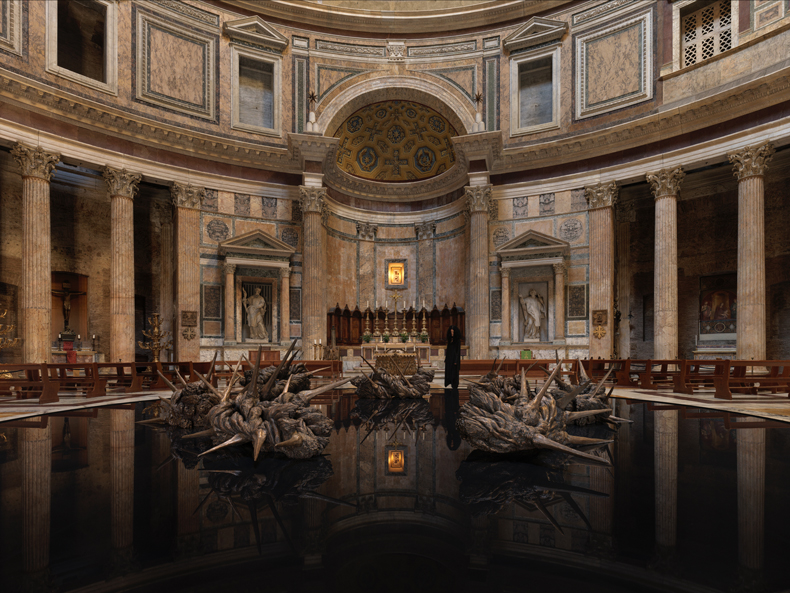The Pantheon in Rome, one of the great wonders of antiquity, was the setting for a remarkable exhibition earlier this summer. Austrian sculptor Helga Vockenhuber became the first woman ever granted the honour of presenting a sculptural installation in this unique space. Her work Corona Gloriae, which was on view from 2 July to 16 September, drew more than a million visitors – a number that underlines the extraordinary magnetism of the project.
At the centre of the installation stand seven hand-modelled fragments of a crown of thorns, cast in bronze and finished with a patina created specifically for the Pantheon called Antika Romana. The sculptures are arranged around a circular water basin that mirrors the proportions of the oculus of the dome, thereby embedding the work in the architecture around it. The still water becomes the source of a double reflection: it mirrors not only the bronze fragments but also the light of the oculus revolving above it. Images of heaviness and lightness, pain and hope, converge in the eye of the beholder. ‘People are deeply moved, lingering at length before the sculptures and allowing both the installation and the space to resonate within them,’ wrote art critic Friedhelm Mennekes, SJ, consultant for contemporary art at the Pontifical Council for Culture. In other words, Corona Gloriae transcends the purely visual and becomes a physical, spiritual experience.

One of the curators, Prof. Giuseppe Cordoni, sees in the work an ‘epiphany of the Christian space, where the memory of the Passion intertwines with the hope of renewal’. The other curator, Don Umberto Bordoni, says: ‘These figures do not speak in a tone of pathos but in the language of silence. It is precisely through their restraint that they gain depth and open a space inviting the viewer to contemplation. They reveal that true greatness lies not in loud triumph but in the quiet power of fostering hope.’
Corona Gloriae also resonates with an earlier exhibition: in 2023, Helga Vockenhuber presented the installation Belonging in Palladio’s Basilica San Giorgio Maggiore in Venice during the Architecture Biennale. There, the work dramatised the relationship between art and architecture. In Rome, Vockenhuber has built on this idea: the work is sustained by still water, the light of the oculus and the Pantheon’s historic and spiritual gravity.
The project was made possible through the support of the Direzione Musei nazionali della città di Roma, the Austrian Embassy to the Holy See and the Dicastery for Evangelisation – Jubilee 2025. With Corona Gloriae, Helga Vockenhuber has demonstrated how contemporary sculpture can not only enter into dialogue with history, but also reinterpret it within a space that, like no other, embodies the tension between past and present.

